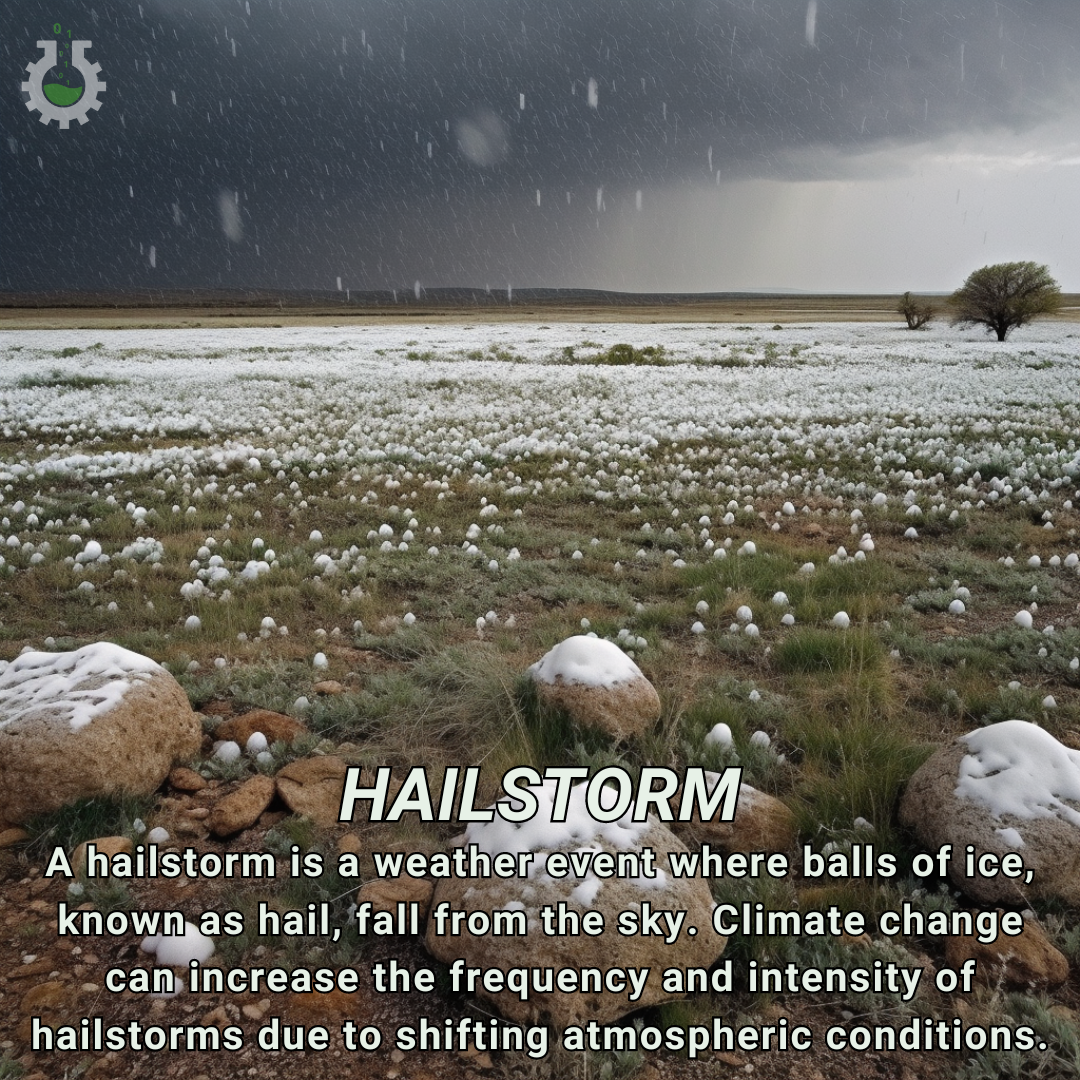May 20, 2024
Climate Change Poster Collection of the Day – Hailstorm
Book a Demo
Today’s Climate Change Poster Collection highlights Hailstorm, characterized by the intense and often destructive fall of solid balls of ice from the sky during thunderstorms, have been a part of Earth’s atmospheric processes for centuries. These potentially devastating weather phenomena can produce ice pellets ranging in size from tiny pebbles to golf balls or even larger in extreme cases. However, recent scientific studies and observed weather patterns have begun to shed light on a potentially alarming connection between the increased frequency and intensity of hailstorms and the ongoing changes in our global climate.
As our planet continues to experience rising temperatures due to the accumulation of greenhouse gases in the atmosphere – a result of human activities like burning fossil fuels and deforestation – the conditions necessary for hail formation are not only becoming more common but are also increasing in severity. The warmer atmosphere can hold more moisture, leading to increased cloud cover and the formation of stronger updrafts and downdrafts within thunderstorms. These are crucial components for the development of hail, as the updrafts carry supercooled water droplets upward where they combine and freeze, while downdrafts bring the hailstones back down, repeating the process and allowing the hailstones to grow larger with each cycle.
In addition to these direct effects of increased temperatures, climate change is also causing alterations in atmospheric circulation patterns and wind shear, which are playing a significant role in the increased severity and frequency of hailstorms. Changes in the jet stream, for instance, can result in more severe weather events including hailstorms.
The impacts of these extreme weather events are profound and far-reaching. They cause significant damage to agriculture, decimating crops and causing financial losses for farmers. Infrastructure, from homes to vehicles, is also at risk from the destructive power of hail. Perhaps most concerning of all, hailstorms can pose serious threats to human safety, with larger hailstones capable of causing injury or even proving fatal in extreme circumstances.
As the reality of our changing climate becomes increasingly evident, it is imperative to deepen our understanding of the intricate relationship between hailstorms and climate change. This is a complex issue requiring extensive research and sophisticated climate modeling to predict future trends and impacts. By gaining a better understanding of this connection, we can enhance our preparedness and resilience to the escalating challenges posed by these severe weather events. This will involve not only improving forecasting and warning systems but also designing infrastructure and agricultural practices to better withstand the impacts of hailstorms.
As society grapples with the broader impacts of climate change, the issue of hailstorms serves as a stark reminder of the many ways in which our changing climate can have direct, tangible effects on our lives. It underscores the urgent need for action to reduce greenhouse gas emissions and mitigate the worst effects of climate change. The connection between hailstorms and climate change is just one piece of the puzzle, but it is a piece that has profound implications for our future.
Discover an inspiring collection of climate change poster.



